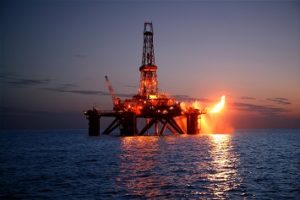Ask yourself: What could you do with $32 billion dollars in your business? A lot, certainly—but not if you’re forced to sink the entire amount into settling federal, state, and local claims for environmental damage from a preventable chemical catastrophe and paying the medical costs of workers or civilians killed or injured by the incident. That’s what Transocean, Ltd., the owner of the Deepwater Horizon drilling rig that exploded off the coast of Louisiana in 2010, has paid so far in costs associated with that incident.

camij / iStock / Getty Images Plus / Getty Images
An investigation by the U.S. Chemical Safety and Hazard Investigation Board (CSB) showed that malfunctioning equipment was at least partly to blame for the Deepwater Horizon incident; CSB investigations of other incidents have also shown that sometimes, investing in your equipment is a smart business move.
In order to help facilities management and EHS professionals make the “business case” for equipment upgrades that can prevent chemical catastrophes, the CSB has issued a report on the costs of four major catastrophes—and the far less expensive measures that could have prevented them.
Yesterday we looked at how facility improvements could have mitigated or prevented the explosion at West Fertilizer Company today, we’ll look at how equipment upgrades could have helped to prevent three other chemical catastrophes.
Failure to Upgrade = Equipment Failure?
In its report, the CSB identified some very costly equipment failures that could have been prevented, including:
A corroded pipe. On August 6, 2012, a process pipe failed at the Chevron Refinery in Richmond, California. The failure released flammable hydrocarbon vapors that ignited, causing a fire whose smoke sent 15,000 workers and nearby residents to the hospital. Chevron paid $2 million in fines and $10 million in medical expenses for those affected and suffered production losses of 118,000 barrels of oil per day during the third quarter of 2012.
The pipe failure was caused by a type of corrosion that occurs in older pipes—but not in their newer replacements. According to a study released in 2002 by NACE International, the annual cost of maintenance expenses related to corrosion in the petroleum refining industry was about $1.7 billion. Had Chevron upgraded all of its piping (not just the pipe that failed) to the newer, corrosion-resistant piping, it could have saved its share of those maintenance costs each year, as well as the direct and indirect costs of the fire.
An outdated blowdown drum. On March 23, 2005, a hydrocarbon isomerization unit (ISOM) exploded at the BP Texas City refinery in Texas City, Texas. Fifteen workers died; 180 more were injured, and financial losses came to more than $1.5 billion.
The explosion had multiple failure points at which it could have been arrested. The initial failure resulted in the overfilling of the ISOM tower with flammable liquid hydrocarbons; the overflow resulted in the opening of pressure relief valves that discharged flammable liquid hydrocarbons into a blowdown drum that had been installed in the 1950s. It had never been updated despite the fact that safer technologies have been available for a long time. The blowdown drum released a geyser of flammable liquid that formed a vapor cloud—and found an ignition source.
Had the release been routed to a flare line, the overflow would have been burned off. BP had the opportunity to connect the ISOM unit to a flare line during a 2002 capital improvement project, but declined to do so because the incremental cost was $150,000. The refinery manager noted that, as a result of not tying in the ISOM unit to the newly-installed flare line, he was able to “bank the savings.”
A double-duty diverter. On April 20, 2010, the Deepwater Horizon rig in the Gulf of Mexico suffered an uncontrolled release of hydrocarbons that led to a catastrophic fire. Eleven workers died, seventeen were critically injured, and four million barrels of oil were spilled into the Gulf. Final costs of the disaster are not yet determined—litigation is still ongoing. So far, rig operator Transocean has paid approximately $13 billion in economic and medical claims as part of an uncapped settlement, plus $20 billion to settle federal, state and local government economic and environmental claims. Other companies that were found liable have paid settlements of more than $1.24 billion to date.
The explosion had many contributing factors, but one key factor was that the equipment that should have prevented the release and explosion was being used for a different purpose than it had been designed for. The rig’s diverter system, which was designed to divert well fluids and gas overboard during shallow gas blowouts, had been adapted to also serve a secondary purpose: circulating the well fluid/mud through a mud-gas separator. In the early 1980s, a dedicated device called a “riser gas handler” was developed to handle the original safety functions of the diverter system, but few rigs installed them. Instead, they continued to use the diverter system for both purposes, creating a hazardous situation that ultimately contributed to the Deepwater Horizon’s demise.
Following the Deepwater Horizon fire, the Norwegian Oil Industry Association and other standards-setting parties changed their standards to recommend designing a diverter system and a mud-gas separator that are not connected. Such a redesign was estimated to cost less than $3 million in 2000; in 2010 dollars, that’s still less than $4 million—an amount that could have saved Transocean tens of billions of dollars, in addition to saving 11 lives.
